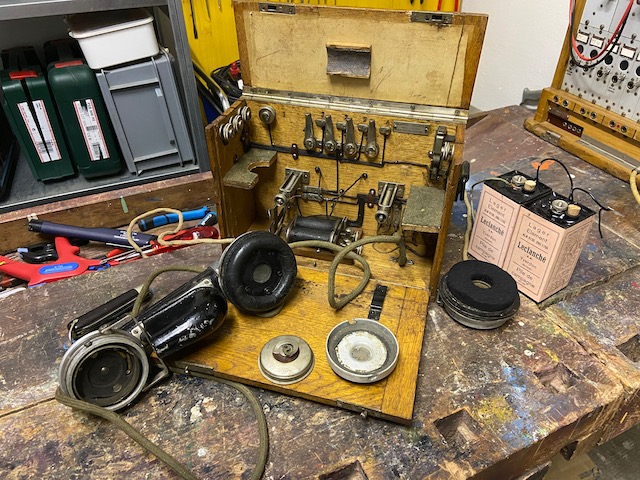
For this article I got a lot of valuable input from Csaba Magdó (Technical museologist at the Hungarian Postal Museum, telegraphs and telephones).
The Mikrophonkassette M.07 was made by different Austro-Hungarian manufacturers, in Vienna: Kapsch & Söhne, Telephon- und Telegraphenwerks H. Jakobi u. Co., Ericsson (vorm. Deckert und Homolka), VTuTF (Vereinigte Telegraphen- und Telefonwerke, Czeija Nissl & Co.), TAG (Telefon-Fabrik AG., vorm. J. Berliner) and in Budapest: TRT (Telefongyár RT), Vereinigte Glühlampen und Elektrizitäts AG (Egyesült Ízzó- és Villamossági RT, later to become Tunsgram), Ericsson (ezelőtt Deckert és Homolka), up to and during WW1. Between 1914 and 1918 72'900 M.07 were delivered, together with pre WW1 deliveries it is estimated that up to 100'000 M.07 were built [1].
The here presented instrument was made by TAG (Telefon Fabrik A.G. vormals J. Berliner, Wien) and seems to have been in use by Bulgarian or Serbian troops as the diagram labels are not German or Hungarian, based on history I think it may be either, or maybe Bulgarian or Serbian speaking troops pertaining to the Austro-Hungarian army. I do not speak any Bulgarian or Serbian, it is just my best guess, for more details see diagram in gallery below.
The oak box holds a aluminum handset of similar construction to the german "Feldfernsprecher (1905)" handset, an additional aluminum headset with leather headband and a circuit-break type buzzer (combined with the induction coil). All wiring is mounted to the inside box walls and all contacts are fixed with screws to contact plates (not soldered). The batteries have to be added in an external oak box (Batteriekassette M.07) which can be connected by wires or directly hinged to bolts which can be pushed out of the back of the main box. A unique type of batteries which includes 2x 1,5V elements in one cardboard box ("Doppellagerelement") is used. The elements per box are connected in series providing 3V, the oak battery box holds two "Doppellagerelement", a single element could be used or a second could be activated for increased durability [2].
No magneto and bell are included, call signalling is only with buzzer. When using the buzzer the local headset is deactivated (to protect the operator). The Mikrophonkassette M.07 allows voice conversation to up to 15km and buzzer signalling to up to 30km on earth return connections [2].
In the Ericsson Budapest catalog of 1914 [7] a Mikrophonkassette is listed with a price of 109 Kronen and 25 Heller, the complete set including the Batteriekassette was 135 Kronen which is equivalent to about 800 Euros today (in Austria). The missing parts for my device would have cost me about 2 Kronen (12 euros): "Summerdeckel" (Buzzer lid), 50 Heller; "Erdspiess" (Earth pike), 1 Kronen 40 Heller.
Each instrument can be used as small 4 line switchboard (with the local instrument itself always switched also in).
Disassembled.

Wiring diagram, barely readable.
The labels are either Bulgarian or Serbian.
The words for Green (Bulg.: зелено, Serb.: зелена) and Earth/Ground (Bulg.: Земята, Serb.: земља) are extremely similar but seem to match slightly better to Bulgarian than Serbian (Bulg. "green" finishes in "o" which matches the writing on the diagram far better than the Serb. "a"), but as I rely there only on google translate this really is a weak identification and it may just be the other way round. I cannot really read the letters of other labels well enough to match it to either.
(Click on the picture for a high-res version if you want to have a go at identifying, I would highly appreciate any feedback).
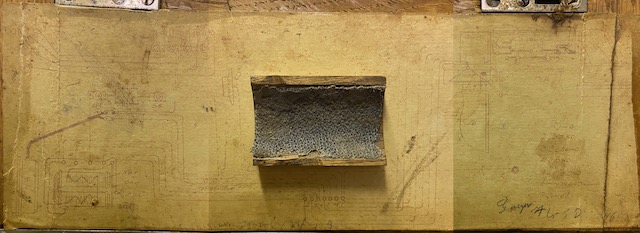
Wiring diagram emphasised (manually drawn overlay, wiring color labels added in german).
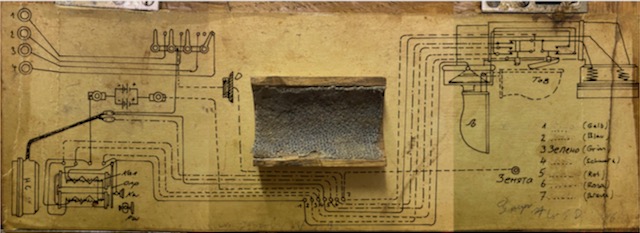
Electrical diagram (self made).
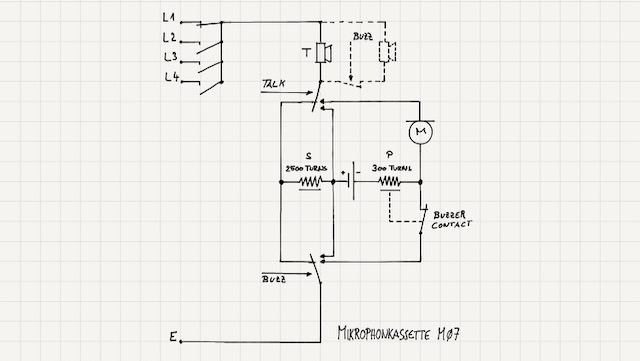
Ready to use.

All stored.
The mouthpiece is folded in to place the handset in the box.
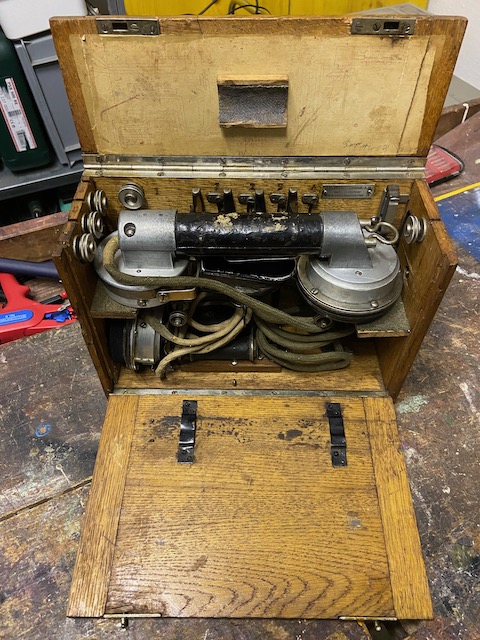
All stored, top closed.
The latches in the front lid would take up the here missing earth pike.
On some specimens a spelling table is added to the front lid inside [5].
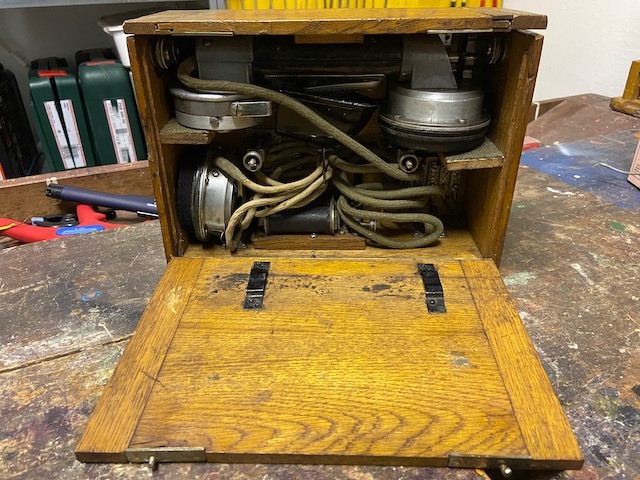
Ready for transport.

From the back.
The two latches can be pushed out from the front to take up the external battery box or battery cables.
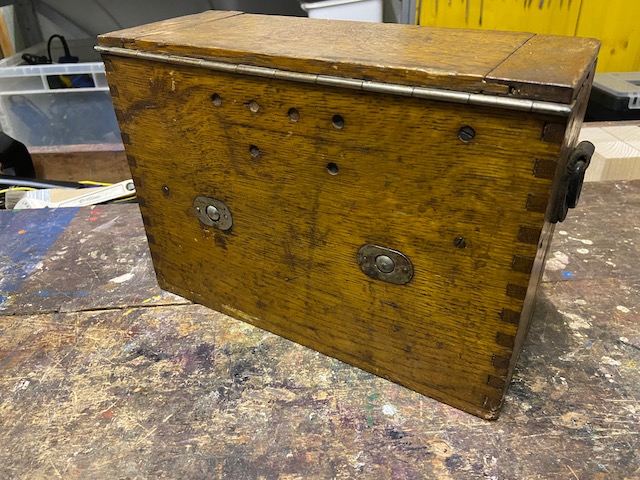
The spring loaded screws are the battery connections which can be pushed out of the back.
The side walls have grooves for the line and earth wires so the instrument can be used with the top lid closed.
On other specimens the front door has grooves for the handset and headset cables to be able to use it completely closed, these are lacking here.
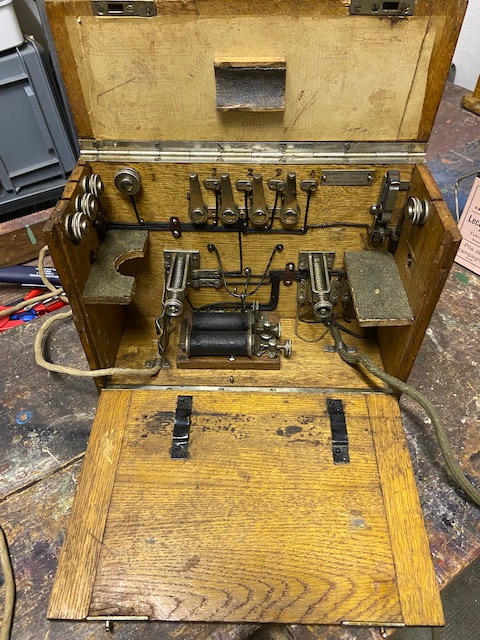
All internal wiring is mounted to the box walls and screwed to contacts, nothing is soldered.
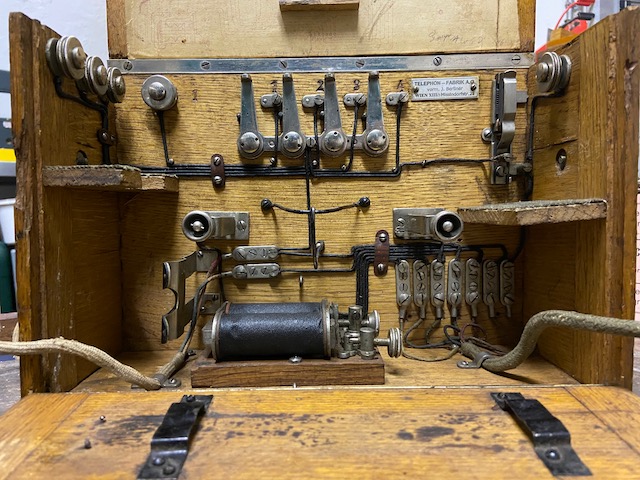
The buzzer also provides the induction coil functionality.
It is mounted on its own wood base.
It is covered by a latched on lid (here missing).
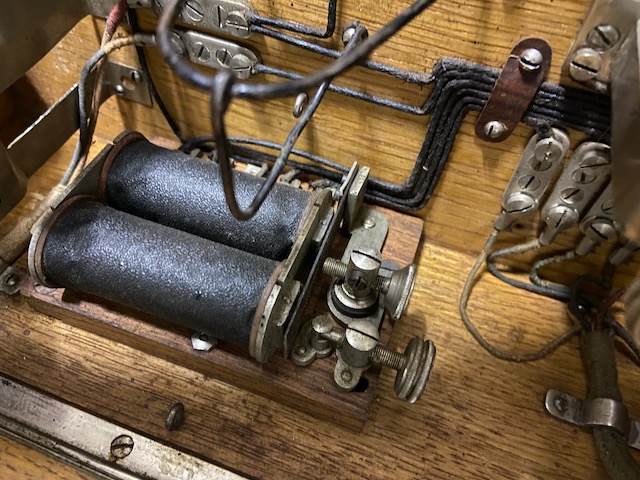
Made by TAG Wien.
On the right the carbon lightning arrester (put between line and earth).
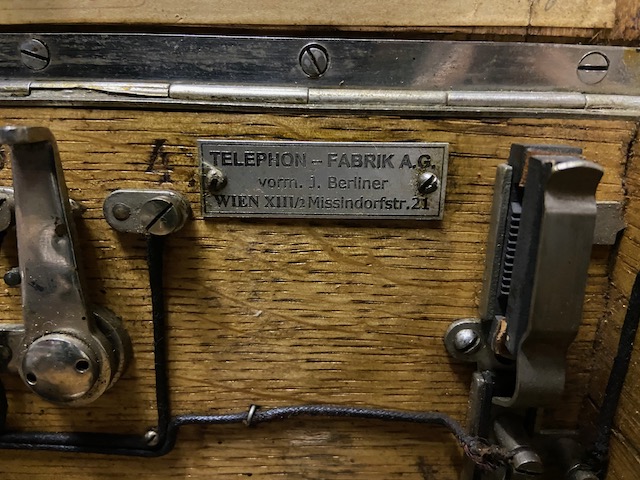
A battery connector pushed out.
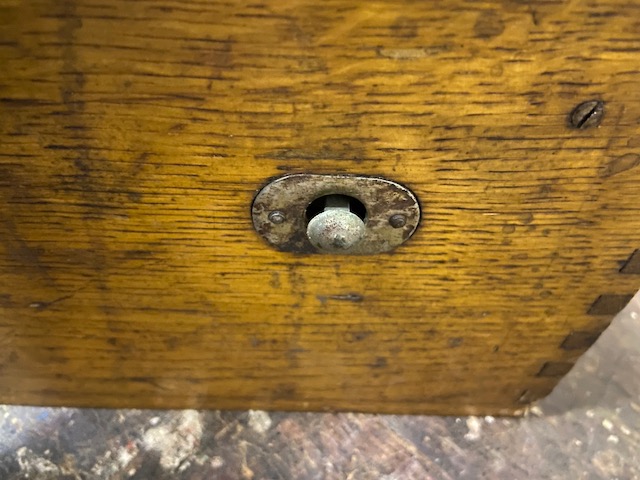
The handset is made of aluminum, the earpiece is leather covered, the mouthpiece is foldable.
The black button is the buzzer button.
The headset is also aluminum, with a felt cover, the leather headband is missing.
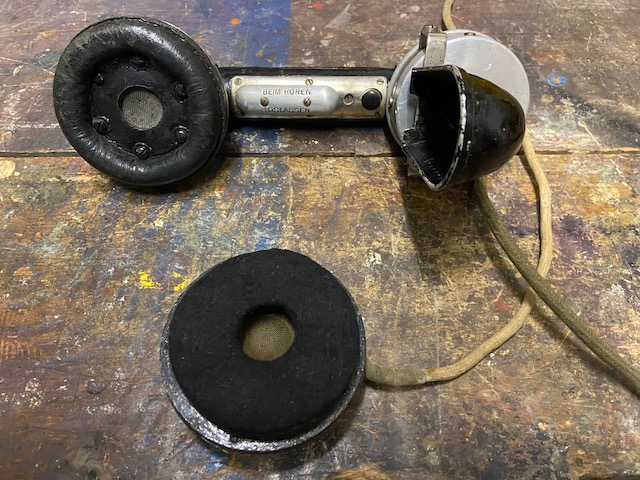
The handset provides a hook to hang it somewhere.
The handle is leather covered.
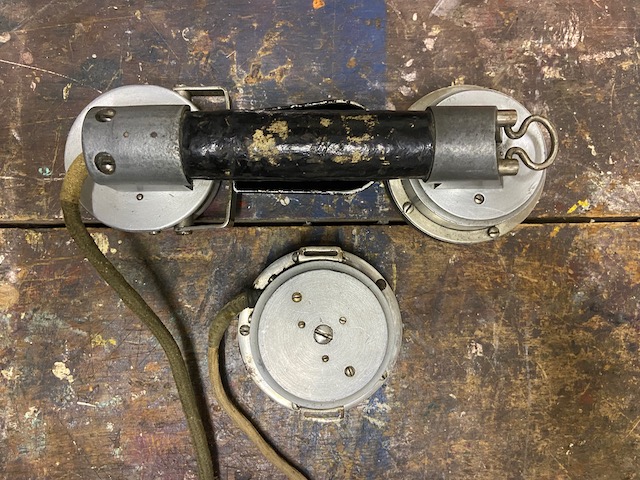
The "push to talk" lever says the "inverse": "Beim hören loslassen" = "Let go when listening".
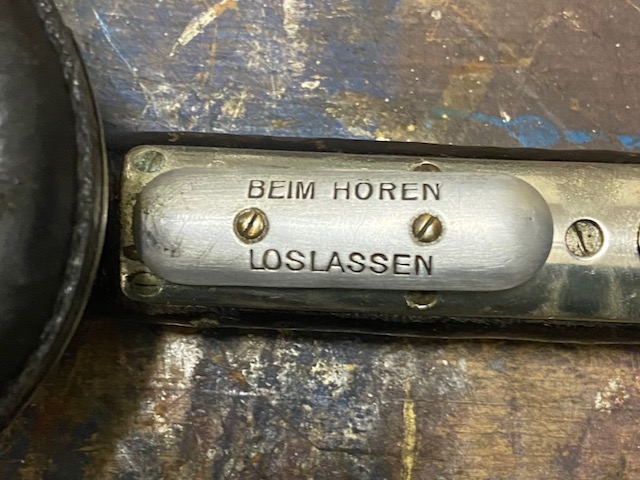
The microphone capsule is made in 1917.
I assume the logo on it is for Ericsson-Deckert-Homolka.
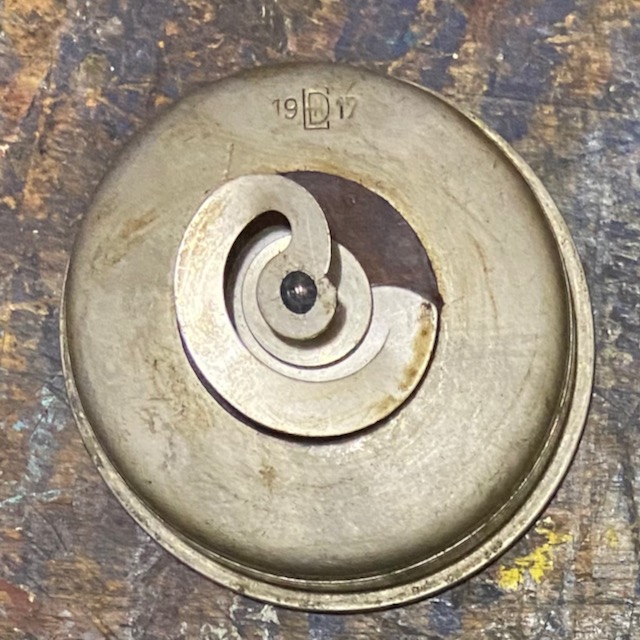
Creative Commons Attribution-ShareAlike 4.0 International License